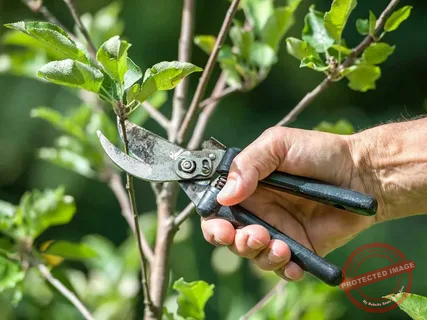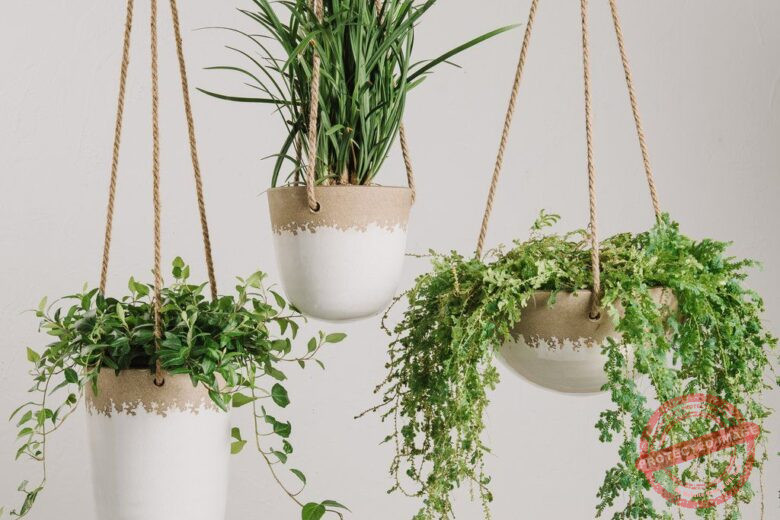Adding greenery to your office can significantly enhance the environment, boost morale, and even improve air quality.
But what if your office has no windows? Don’t worry! There are many plants that can thrive in low-light conditions, bringing the benefits of nature into your workspace. Here are 15 of the best plants for an office with no windows.
1. Snake Plant (Sansevieria trifasciata)
Why It’s Great
The Snake Plant, also known as Mother-in-Law’s Tongue, is incredibly resilient and can survive in low light and with infrequent watering. It’s also known for its air-purifying qualities, making it an ideal choice for offices.
Care Tips
- Light: Low to bright indirect light
- Water: Every 2-3 weeks, allowing the soil to dry out completely between waterings
- Maintenance: Minimal, occasional dusting of leaves
2. ZZ Plant (Zamioculcas zamiifolia)
Why It’s Great
ZZ Plants are almost indestructible and can thrive in low-light conditions. Their glossy leaves add a touch of elegance to any office space.
Care Tips
- Light: Low to bright indirect light
- Water: Every 2-3 weeks, allowing the soil to dry out between waterings
- Maintenance: Low, wipe leaves to keep them shiny
3. Pothos (Epipremnum aureum)
Why It’s Great
Pothos, or Devil’s Ivy, is famous for its ability to grow in various lighting conditions, including low light. It’s a vigorous grower and can be trained to climb or trail, adding visual interest to your office.
Care Tips
- Light: Low to bright indirect light
- Water: Once a week, allowing the soil to dry out between waterings
- Maintenance: Prune regularly to encourage bushier growth
4. Philodendron
Why It’s Great
Philodendrons are adaptable and low-maintenance, perfect for office environments. They come in a variety of shapes and sizes, with lush green foliage that can brighten any workspace.
Care Tips
- Light: Low to bright indirect light
- Water: Every 1-2 weeks, letting the soil dry out between waterings
- Maintenance: Moderate, occasional pruning and wiping leaves
5. Peace Lily (Spathiphyllum)
Why It’s Great
Peace Lilies are not only beautiful but also excellent at filtering indoor air pollutants. They can thrive in low light, and their white blooms can add a touch of elegance to your office.
Care Tips
- Light: Low to medium indirect light
- Water: Weekly, keeping the soil consistently moist but not waterlogged
- Maintenance: Low, remove spent blooms to encourage new growth
6. Spider Plant (Chlorophytum comosum)
Why It’s Great
Spider Plants are hardy and adaptable, known for their air-purifying abilities. They produce “babies” or offsets that can be propagated easily, making them a fun plant to share with colleagues.
Care Tips
- Light: Low to bright indirect light
- Water: Every 1-2 weeks, allowing the soil to dry out between waterings
- Maintenance: Low, remove dead leaves and occasional dusting
7. Chinese Evergreen (Aglaonema)
Why It’s Great
Chinese Evergreens are incredibly tolerant of low light and require minimal care. They come in a variety of colors and patterns, adding a decorative touch to your office.
Care Tips
- Light: Low to medium indirect light
- Water: Every 2-3 weeks, allowing the soil to dry out between waterings
- Maintenance: Low, wipe leaves to keep them clean
8. Cast Iron Plant (Aspidistra elatior)
Why It’s Great
True to its name, the Cast Iron Plant is nearly indestructible. It can tolerate neglect, low light, and irregular watering, making it perfect for busy office environments.
Care Tips
- Light: Low to bright indirect light
- Water: Every 2-3 weeks, allowing the soil to dry out between waterings
- Maintenance: Low, occasional cleaning of leaves
9. Dracaena
Why It’s Great
Dracaenas are popular office plants due to their striking appearance and low maintenance needs. They can tolerate low light and are great for adding height and structure to your office decor.
Care Tips
- Light: Low to medium indirect light
- Water: Every 2-3 weeks, allowing the soil to dry out between waterings
- Maintenance: Low, prune to remove dead leaves and promote new growth
10. Parlor Palm (Chamaedorea elegans)
Why It’s Great
Parlor Palms are elegant, slow-growing palms that can thrive in low light conditions. They add a tropical touch to your office without demanding much attention.
Care Tips
- Light: Low to medium indirect light
- Water: Every 1-2 weeks, allowing the soil to dry out between waterings
- Maintenance: Low, occasionally mist leaves to increase humidity
11. Ficus Audrey (Ficus benghalensis)
Why It’s Great
Ficus Audrey is a sturdy plant that can adapt to low light environments. It has large, velvety leaves that can add a bold, architectural element to your office space.
Care Tips
- Light: Low to medium indirect light
- Water: Every 1-2 weeks, allowing the soil to dry out between waterings
- Maintenance: Moderate, clean leaves and rotate plant regularly
12. Corn Plant (Dracaena fragrans)
Why It’s Great
Corn Plants are another variety of Dracaena that can tolerate low light and neglect. Their long, arching leaves can bring a touch of nature to your workspace.
Care Tips
- Light: Low to medium indirect light
- Water: Every 2-3 weeks, allowing the soil to dry out between waterings
- Maintenance: Low, occasional pruning of yellow or dead leaves
13. Peperomia
Why It’s Great
Peperomias are small, attractive plants that come in a variety of shapes and colors. They’re perfect for desktops and can thrive in low light conditions with minimal care.
Care Tips
- Light: Low to medium indirect light
- Water: Every 1-2 weeks, allowing the soil to dry out between waterings
- Maintenance: Low, remove yellow leaves and occasionally dust
14. Rex Begonia (Begonia rex)
Why It’s Great
Rex Begonias are prized for their vibrant and colorful foliage. They can thrive in low light conditions, making them a great decorative plant for an office without windows.
Care Tips
- Light: Low to medium indirect light
- Water: Every 1-2 weeks, keeping the soil moist but not soggy
- Maintenance: Moderate, prune to maintain shape and remove dead leaves
15. Lucky Bamboo (Dracaena sanderiana)
Why It’s Great
Lucky Bamboo is a popular office plant believed to bring good fortune. It can grow in water or soil and is highly adaptable to low light conditions.
Care Tips
- Light: Low to bright indirect light
- Water: If grown in water, change water every 2 weeks; if in soil, water every 1-2 weeks
- Maintenance: Low, clean leaves and container regularly
Benefits of Office Plants
1. Improved Air Quality
Many indoor plants are known for their air-purifying qualities, removing toxins like formaldehyde, benzene, and trichloroethylene from the air. This can lead to a healthier and more pleasant work environment.
2. Increased Productivity and Creativity
Studies have shown that having plants in the workplace can boost productivity, creativity, and overall well-being. The presence of greenery can reduce stress and make employees feel more relaxed and focused.
3. Enhanced Aesthetics
Plants can add a touch of nature to otherwise sterile office environments. They can soften harsh lines, add color, and create a more welcoming atmosphere for employees and visitors alike.
Read Also: 15 Best Companion Plants for Blueberries (And Which Ones to Avoid)
4. Noise Reduction
Certain plants can help absorb sound, reducing noise levels in open office spaces. This can contribute to a quieter and more conducive work environment.
5. Humidity Regulation
Plants release moisture into the air through a process called transpiration. This can help regulate humidity levels in an office, making the environment more comfortable, especially in dry, air-conditioned spaces.
Tips for Maintaining Office Plants
1. Choose the Right Plants
Select plants that are well-suited for low light conditions and can tolerate the specific environment of your office. Consider factors like temperature, humidity, and available space.
2. Proper Watering
Overwatering is a common mistake that can lead to root rot. Make sure to let the soil dry out between waterings and use pots with drainage holes to prevent waterlogging.
3. Regular Cleaning
Dust can accumulate on plant leaves, blocking light and reducing the plant’s ability to photosynthesize. Wipe the leaves with a damp cloth regularly to keep them clean.
4. Fertilize Sparingly
Most office plants don’t require heavy fertilization. Use a balanced, water-soluble fertilizer every 2-3 months during the growing season to provide essential nutrients.
5. Monitor for Pests
Keep an eye out for common indoor plant pests like spider mites, aphids, and mealybugs. Treat infestations promptly with insecticidal soap or neem oil.
6. Rotate Plants
If possible, rotate your plants every few weeks to ensure even growth and prevent them from leaning towards the light source.



